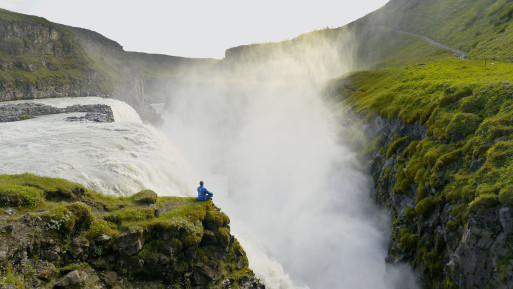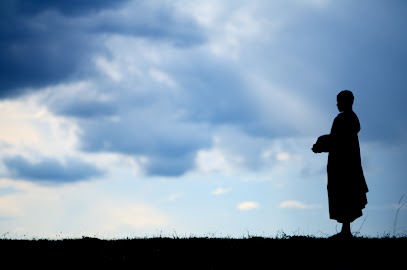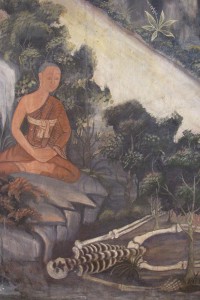
Credit: photoshd.wordpress.com
It may sound macabre or unusual, but corpse mediation is real — and, in many parts of Thailand and some other parts of Southeast Asia, a fairly normal occurrence, specifically among Buddhist monks.
It’s typical for monks to meditate while in the presence of or looking at dead bodies. Sometimes it is a literal body, other times a photo. In fact, many monks actually carry photographs depicting deaths or bodies in various stages of decomposition, and such photographs can be purchased at religious shops throughout Thailand. The Buddha himself even recommended corpse meditation, and it is a widely respected practice.
And yes, to most of us this may sound deeply unpleasant. But corpse mediation serves several important purposes. According to Arthur C. Brooks of The New York Times (who has witnessed corpse meditation first hand), “This mediation of death is intended as a key to better living. It makes disciples aware of the transitory nature of their own physical lives and stimulates a realignment between momentary desires and existential goals. In other words, it makes one ask, ‘Am I making the right use of my scarce and precious life?’”
Siripanyo Bhikkhu — a monk interviewed for a piece in The Washington Times — said that the purpose of this traditional form of meditation is, “simply to hold in your mind, very clearly, that when you look at a [living] person, you’re seeing only the external aspects of that physical person…We are obsessed with the externals. No one wants to see the internals. But we try to see them in an equal light, neither delighting nor being repelled by the attractive or unattractive signs of the external or internal.”
He goes on to explain that it is completely normal for a monk to have corpse meditation photos with them at all times. Often they will take them out when eating, resting or in other situations throughout the day.

Credit: omharmonics.com
“It sounds incredibly gruesome and almost bizarre,” Bhikkhu says, “But it is totally, totally normal and understood in Thailand.”
And perhaps these Buddhist monks are on to something. So often, we try to shove death into the darkest corners of our subconscious. But, in some ways, reminding ourselves of our transience helps us to truly embrace life.

 Corpse Meditation: A Buddhist Practice
Corpse Meditation: A Buddhist Practice



 John Mulaney’s “Funeral Planning” on Netflix: No Real Plan
John Mulaney’s “Funeral Planning” on Netflix: No Real Plan

 Composting Bodies Is Now Legal in a Dozen States
Composting Bodies Is Now Legal in a Dozen States














